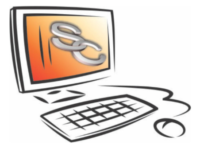
In today’s digital age, proficiency in Microsoft Office is crucial for maximizing productivity and efficiency in bothh personal and professional settings. From creating documents and analyzing data to delivering compelling presentations and managing communications, Microsofty Office offers a versatile suite of tools designed to streamline tasks and enhance collaboration. This comprehensive guide explores the essential features and expert tips to help you harness the full potential of Microsoft office applications.
Microsoft Office Overview
Microsoft Office encompasses a suite of applications that cater to various needs in office work and personal productivity. Here’s an overview of the core applications:
- Microsoft Word: A Word Processing program for creating and edicting text documents. It offers robust formatting options, templates for quaick document creation, and tools for collaboration.
- Microsoft Excel: A powerful spreadsheet application used for data management, analysis, and visualization. Excel features include formulas and fuctions for calculations, pivot tables for datasummarization, and charts for visual representation of data trends.
- Microsoft PowerPoint: A presentation program that allows users to create dynamic slideshows with multimedia elements such as images, videos, and animations. PowerPoint helps in designing visually appealing presentations and delivering them effectively.
- Microsoft Outlook: An email and presonal information manager that integrates email, calendar, contacts, and tasks. Outlook facilitates efficient email communication, scheduling of appointments and meetings, and organizing personal and professional contacts.
1. Microsoft Word: Creating Professional Document
Microsoft Word is essential for creating various types of documents, from simple letters to complex reports and manuscripts. key features include:
Formatting and Styling:
Use styles to maintain consistency in formatting throughtout the document. Customize fonts, colors, and spacing to enhance readability and visual appeal.
Document Navigation:
Navigate and edit large documents easily using features like Navigation Pane and Document Map. These tools allow users to quickly move between sections and headings.
Inserting Graphics and Tables:
Enhance documents by inserting images, tables, and charts. Word provides tools for resizing, positioning, and formatting graphics and tables within the document.
Collaboration and Review:
Utilize Track Changes and Comments to collaborate with others on document editing. Reviewing tools enable users to accept or reject changes and manage document revisions efficiently.
2. Microsoft Excel: Data Management and Analysis
Microsoft Excel is indispensable for tasks involving data management,, analysis, and visualzation. Here’s a detailed look at its key capabilities:
Managing Data:
Orginize data into structured tables and lists. Use features like Data Valaidation to ensure data accuracy and consistency.
Formulas and Functions:
Excel offers a wide range of built-in formulas and functions for poersorming calculations, analyzing data trends, and deriving insights. Examples include SUM, AVERAGE, IF, VLOOKUP and more.
Data Analysis Tools:
Utilize Privot Tables to summarize and nalyze large datasets dynamically. Pivot Charts complement Pivot Tables by visualizing data trendsand patterns effectively.
Conditional Formatting:
HIghlight important data trends using conditional formatting rules. Apply colors, icons, and data bars to cells based on specified criteria to make insights more visible.
3. Microsoft PowerPoint: Creating Dynamic Presentations
Microsoft Powerpoint is empowers users to create engaging and impactful presentation that captivate audiences. Here’s how to make the most of its features:
Designing Slides:
Choose from a variety of built-in templates and themes to create professional-looking slides. Customize layouts, backgrounds, and fonts to match the presentation’s content and style.
Adding Multimedia:
Incorporate multimedia elements such as images, videos, audio clips, and aniations to enhance visual appeal and engage audience interest.
Slide Transitions and Animations:
Use slide transitions and animations sparingly to add visual interest and emphasize key points. Smooth transitions and subtle animations can make presentations more polished and professional.
Presenter Tools:
Take advantage of Presenter View to manage slides, notes and annotations while presenting. This feature allows presenters to see upcoming slides and notes privately while the audience views the current slide.
4. Microsoft Outlook: Effective Email Management
Microsoft Outlook is a versatile tool for managing email communication, calendars, tasks, and contacs. Here are its core functionalities:
Email Organization:
Use folders, categories, and rules to organize and prioritize incoming emails. Flag important emails for follow-up and use search features to locate specific messages quickly.
Calendar and Scheduling:
Schedule appointments, meetings, and events directly from Outlook. View multiple calendars, check avilability, and send meeting invitations to participants.
Task Management:
Create tasks, set deadlines, and track task progress within Outlook. Organize tasks by priority, due date, or category to stay productive and focused on important activities.
Integeration with Office Apps:
Outlook integrates seamlessly with other Microsoft Office applications like Word, Excel and PowerPoint. Users can attach files, share documents, and collaborate on projects directly from Outlook.
Conclusion: Mastering Microsoft Office applications goes beyond acquiring basic skills; it empowers individudals to work more effieciently, communicate effectively, and present ideas with clarity and impact. Whether you’re a student, a business professiona, or someone looking to enhance their digital literacy, investing time in learning and mastering these tools will undoubtedly pay dividents in personal and professional growth. Start exploring the powerful features of Microsoft Office today and elevate your productivity to new heights.
Reference link:
Ready to enhance your skills in Microsoft Office? Explore our comprehensive courses at Sandhya Computech and learn from industry experts. Subscribe to our blog for more insights into computer education, technology trends, and tips for personal and professional developement
